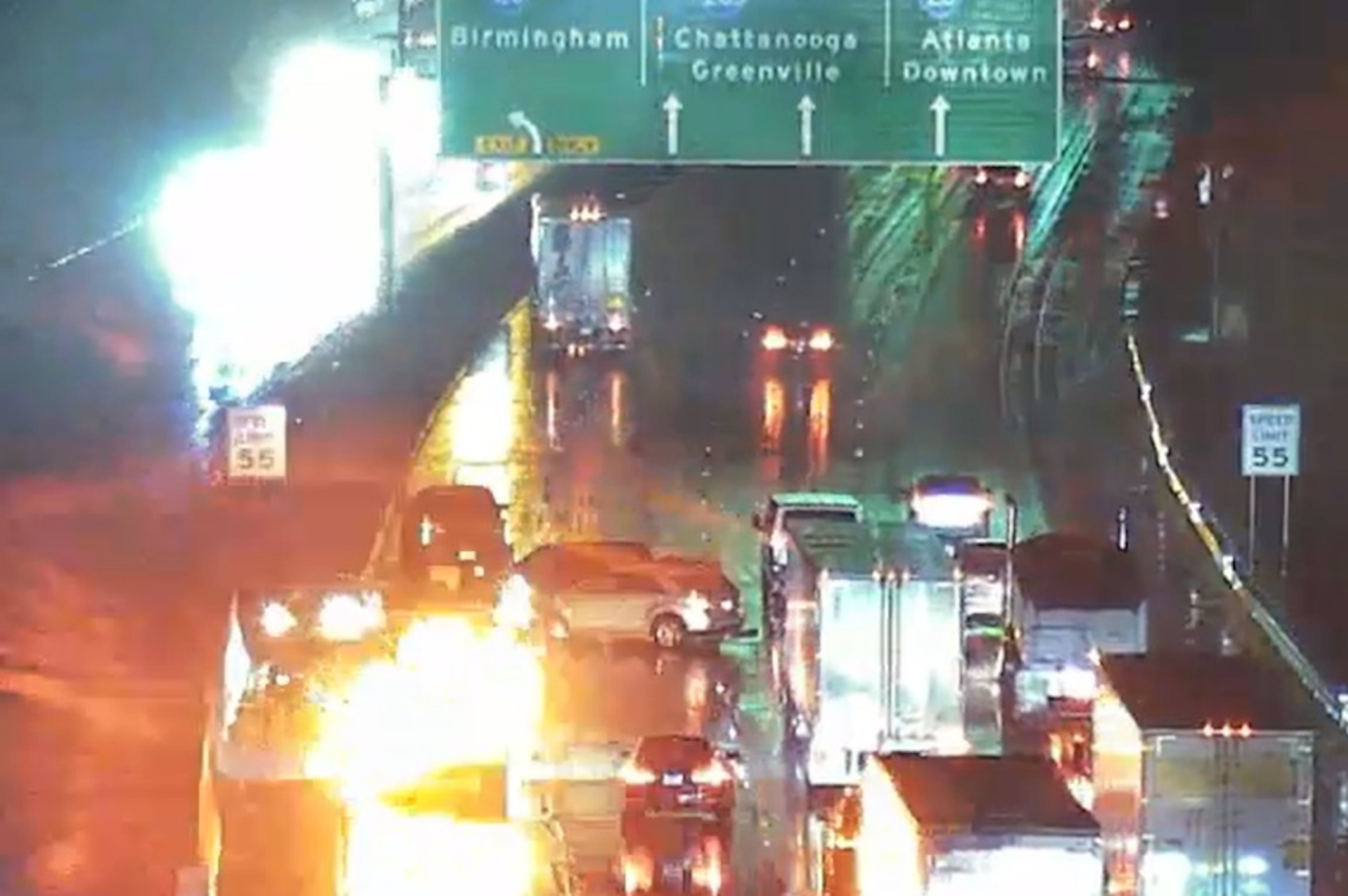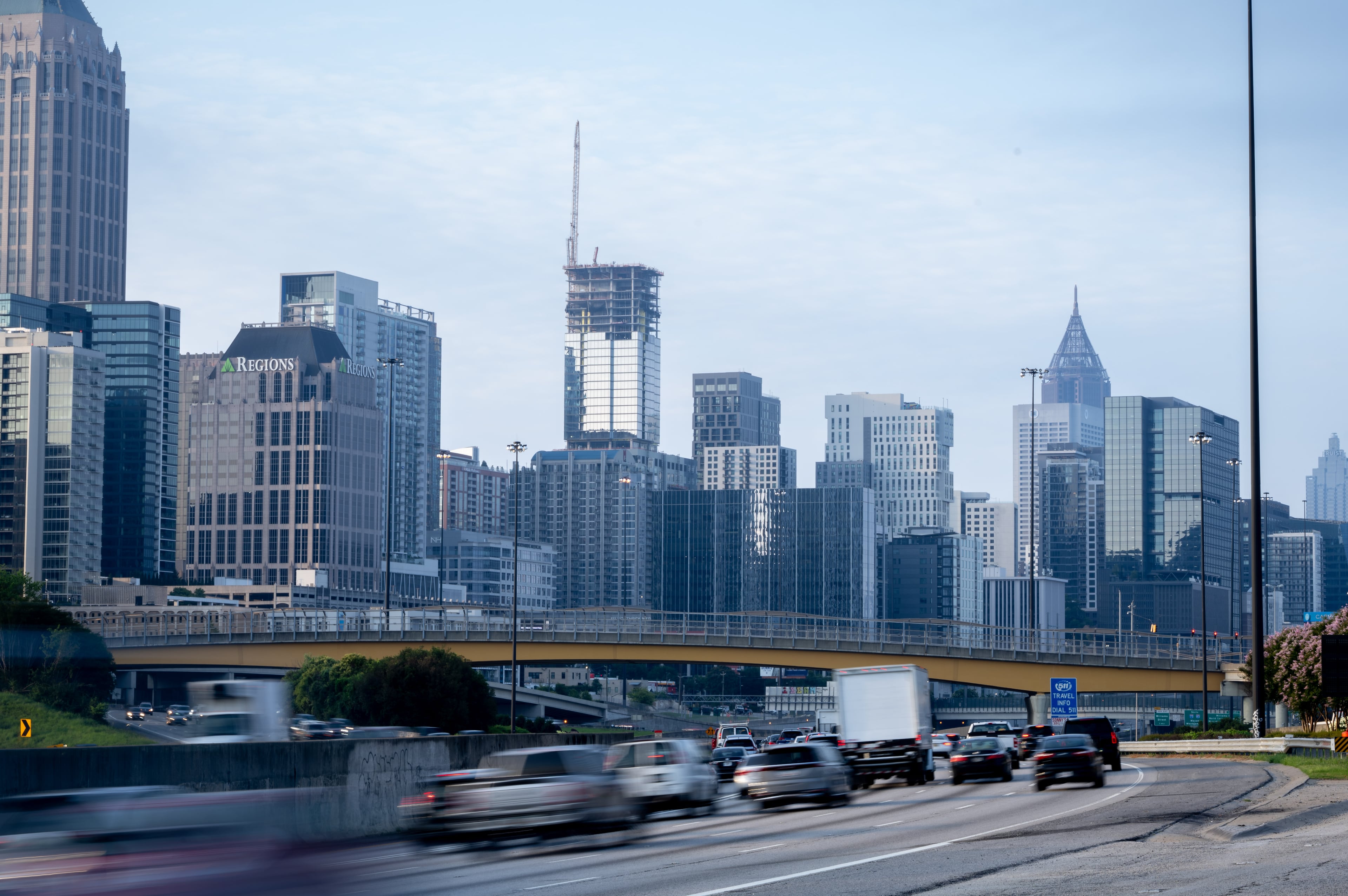Westside neighborhoods push back against Georgia Power substation
As light rain from an afternoon storm fell outside, dozens of Westside residents gathered recently in the Lindsay Street Baptist Church for an emergency town hall meeting.
Shade’ Yvonne Jones took to the microphone in the middle of the room for a call to action against what neighborhood residents say is a clear case of environmental injustice: Georgia Power’s plan to place a new substation in the historic Vine City neighborhood to help power a multibillion-dollar downtown development.
“Change is possible. I know that people say, ‘This is a big conglomeration, nothing can be done,’” Jones said. “But with the people united, it’s a possibility.”
“We need to let the city know we aren’t willing to accept what Georgia Power is trying to put down on us,” she said.
Members of communities that border Mercedes-Benz Stadium are pushing back against the substation set to be nestled in one of Atlanta’s earliest neighborhoods where Black residents found their footing after the Great Fire of 1917 drove many out of Sweet Auburn.
Georgia Power says the substation, soon to be located between Foundry and Magnolia streets along Northside Drive, is meant boost the entire power grid’s “reliability, resiliency, and efficiency” as energy demands continue to grow in the area.
According to informational materials shared with community leaders, the company told residents that the substation will help support energy needs about two miles away in the Gulch to help transform it as part of the Centennial Yards redevelopment — a $5 billion project that will fill the 50-acre void where a railroad yard sat untouched for years.
Georgia Power also pointed to activity around the upcoming 2026 FIFA World Cup as a reason for it.
It’s not the first facility of its kind to be constructed in the middle of the historic community; another sits less than a half mile away from the proposed site. But there’s an important difference: The new location is separated from residents’ homes by a single-lane street.
Jones, an environmentalist and former Neighborhood Planning Unit chair, said the facility furthers a history of pushing undesirable projects on the community without input.
“Why didn’t you come to the community and see what we thought or just work along with us?” she asked. “Now you’re saying that we don’t have a choice.”
Georgia Power “said explicitly, it was for the Gulch development and for Centennial Yards — and if that be the case, put it over there,” Jones said. “Why should it be over here with us?”
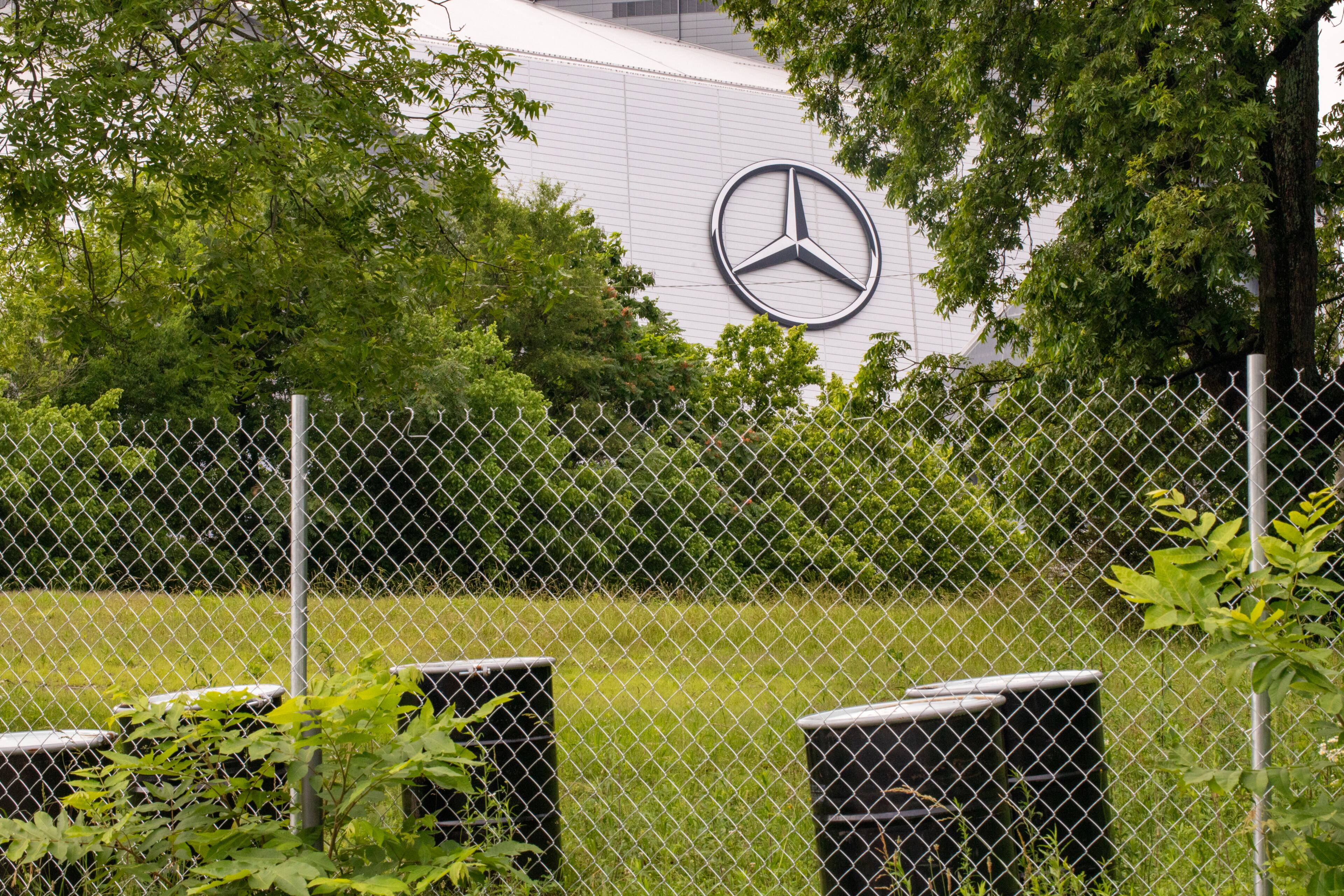
In a statement to The Atlanta Journal-Constitution, Georgia Power said that it’s planning to host a meeting with residents in the impacted neighborhoods today.
“We understand and appreciate neighbors’ concerns and questions,” the company said in the statement. “We’re working to finalize plans and inform the community before we make these necessary investments in the power grid to better serve current and future customers across the area.”
The utility company also said it intends to break ground on the project this month but won’t finish construction until 2028. That includes laying new transmission lines underneath the neighborhood streets to connect existing utility infrastructure.
For residents, that also means headaches caused by roadway disruption.
“For a community that is still trying to rebound and come back — that’s had a lot of starts and stops — it’s really not in the best place,” said Atlanta City Council member Michael Julian Bond. “It’s not a good look, aesthetically, for that corridor.”
The Georgia Power facility, he said, would act as a visual barrier between the neighborhood and the bustling Mercedes-Benz Stadium, massive World Congress Center and towering Signia Hilton Hotel.
“The opportunity, as far as that being a gateway into Vine City proper, is forever lost by having that substation there,” Bond said.
History of ‘environmental injustices’
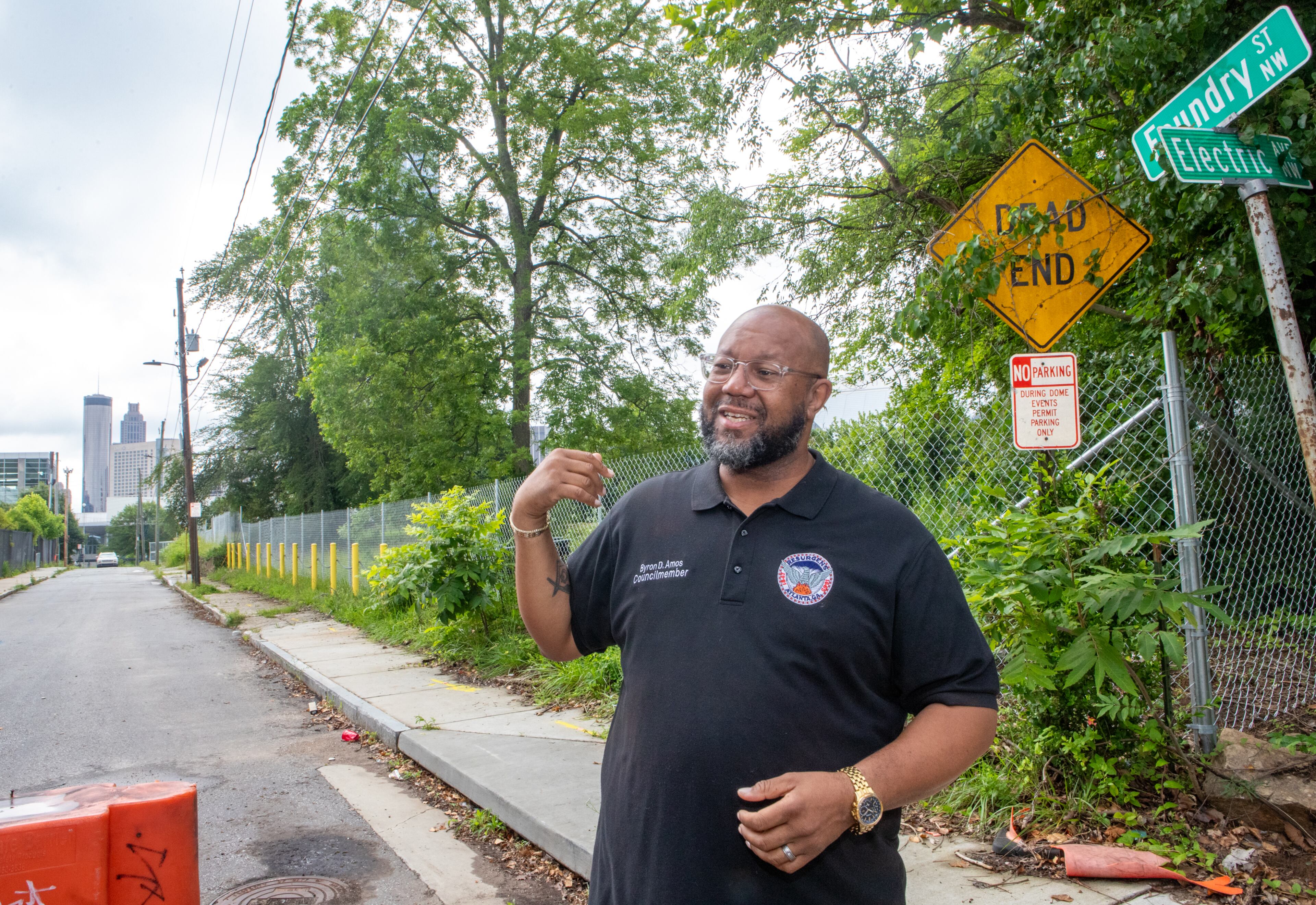
At the corner of Foundry Street and Electric Avenue, Atlanta City Council member Byron Amos stood less than a block away from his childhood home where he still lives.
He pointed to the chain-link fence that was recently erected around the unmanicured green space that will house Georgia Power’s proposed substation.
“The community is special, and we really have a timeline of hills and valleys,” he said. “We got beautiful parks; crime is down, and then you want to build a substation — so now we’re looking at a valley again.”
“Who wants to move next to a substation?” Amos said.
A one-lane road separates the site from a neighborhood of single-family residences to the west. Just across the street to the north, the futuristic Dome in the City nightclub casts a glare off its white surface — another project that Vine City residents say brought problems to the community.
Less than a half mile further, another Georgia Power substation helps power the city’s grid. In between the two facilities, Bethune Elementary School serves about 550 children.
There has also been a complete absence of meaningful community engagement. Most egregiously, there has been no acknowledgment of the substation's proximity to an elementary school located just one block away.
The neighborhood has a history of environmental hardship, residents say. High levels of lead have been found in slag scattered across the area adjacent to downtown. The industrial waste is a common byproduct of smelting that was done in the foundries that once operated on the land.
In 2022, the U.S. Environmental Protection Agency added the neighborhoods to a national list of areas that need to be prioritized for cleanup of hazardous material.
On behalf of Vine City and English Avenue residents, Amos sent a letter to Georgia Power requesting the company pay for a full environmental and public health risk study of the substation location conducted by outside consultants.
“Historically, Vine City and English Avenue have been disproportionately burdened by environmental injustices,” the letter said, adding: “This request is not only reasonable — it is necessary.
“These neighborhoods have long borne the costs of decisions made without their consent.”
On May 27, Georgia Power responded, saying that it had already met environmental impact study requirements through the state Environmental Protection Division and federal EPA.
“The company respectfully declines the request to hire another third party and/or attorney to perform additional assessments,” Georgia Power’s letter said.
“We would not compromise public health and safety, and all plans are specifically designed to supply reliable electric service and comply with environmental and safety regulations,” the company also said in a statement to the AJC.
Georgia Power said that the new substation will be enclosed — hiding a majority of its innerworkings from the outside — and that construction will add greenery to the site as well as remove any surface soil that may be contaminated from previous land use.
“Georgia Power has definitely stuck to the company line: We are going to build it, we need it and that’s it,” Amos said.
Spotlight on utility elections
The Vine City substation is not the only Georgia Power project in the area that’s causing uproar. The Howell Station neighborhood is also railing against the company’s plan to install new high-voltage transmission lines along their residential streets to connect a substation at a data center campus to the utility’s broader grid.
The project has emphasized the community impacts of massive data centers as the industry booms in and around the metro area. The plan, residents say, would also remove the natural tree buffer between the neighborhood and the troubled Fulton County Jail on Rice Street.
The two projects — which are deeply opposed by the communities around them — cast a spotlight on the statewide Public Service Commission elections. The board’s members oversee Georgia’s electricity and natural gas rates.
Opponents of Georgia’s process of electing all five PSC members statewide — instead of by districts — say it discriminates against Black voters and violates the Voting Rights Act. Lawsuits over Georgia’s PSC elections haven’t been successful, but appeals are pending.
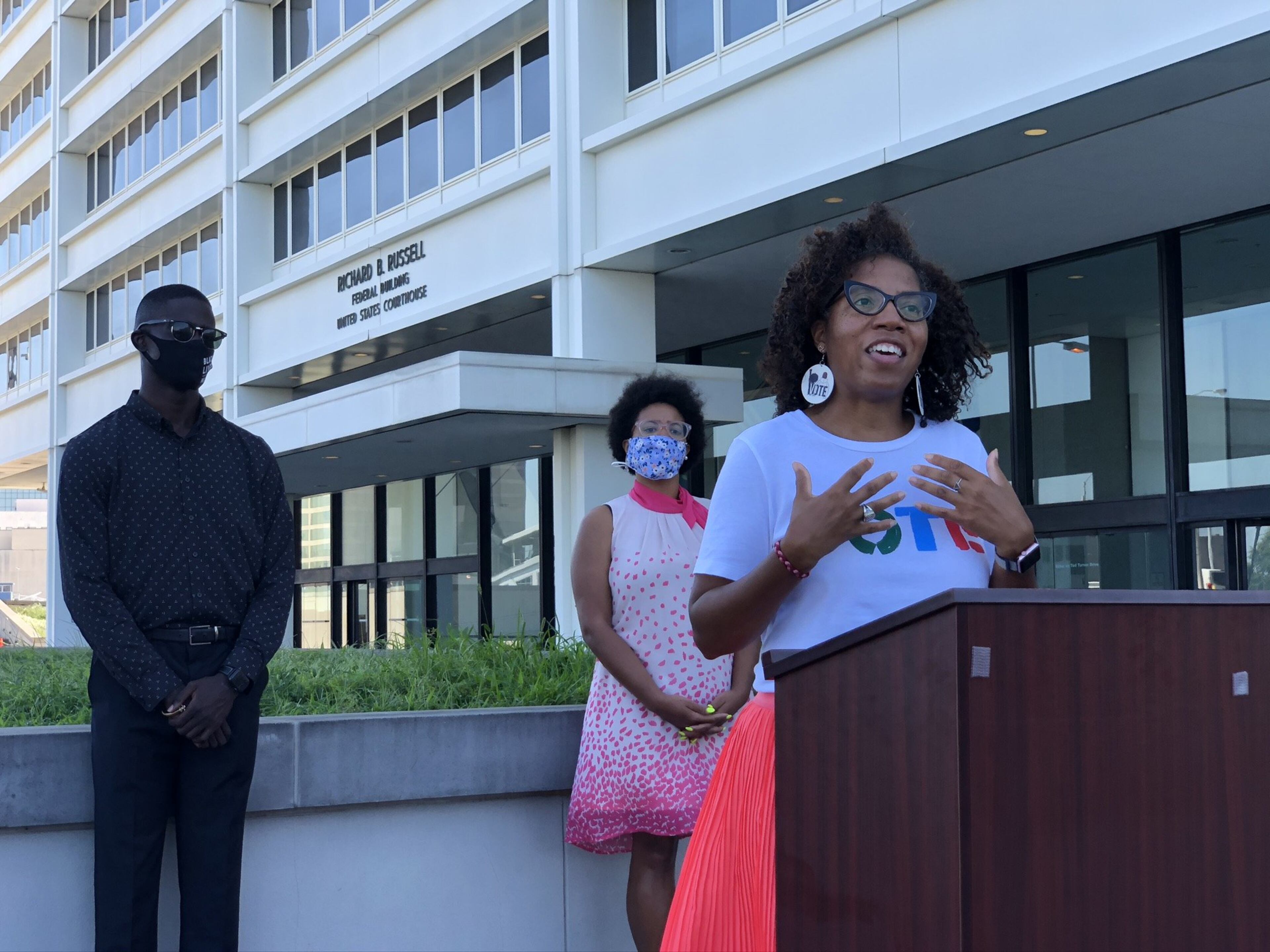
Westside residents say utility projects like the Vine City substation are exactly why the utility commission board members should be elected by the communities they represent so they can advocate for those neighborhoods.
One of the complainants on the lawsuit is Rev. James Woodall, the former president of the Georgia NAACP and associate minister at the Lindsay Street Baptist Church.
“There are processes in place that really prevent us from having our voice heard,” Woodall told the residents gathered for the emergency town hall.
“We need to get out the vote,” he said. “We need to ensure that the people who are running understand these issues.”
Since late 2022, a series of rate hikes approved by the PSC have pushed the average Georgia Power residential customer’s monthly bill up by about $43, according to data from the company. Last month, Georgia Power struck a tentative deal with the board to keep its current base electricity rates in place for the next three years.
“It’s not just a slap in the face to Vine City or English Avenue,” Former State Rep. “Able” Mable Thomas said of the rate hikes and unwanted projects. “It’s a slap in the face to the whole city.”

